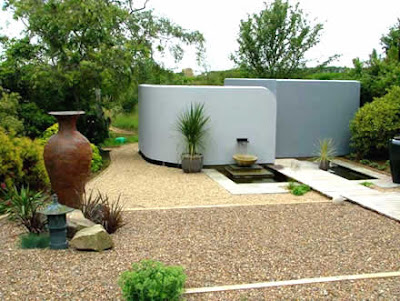 Learn About Organic Garden Design on a Budget and Reap The Benefits of Cheap Healthy Food
Learn About Organic Garden Design on a Budget and Reap The Benefits of Cheap Healthy FoodBy Tee Rogers
A garden has always been the perfect place to unwind and relax! However, more and more people are now growing their own fruit and vegetables as the perfect solution to tough economic times. This ensures a supply of healthy seasonal food which reduces the household budget and if the garden adheres to organic principles, also means that the produce is free of chemicals.
Here are some tips to help you in your own organic garden design:
Organic garden design tip 1: Your organic garden should use what suits your location rather than trying to force a garden to produce that which was designed for another climate or location. You will find you don't need to work so hard growing plants that come from your local area so don't struggle with those that are not natural to your environment. You will have a much better guarantee of success when you adopt this approach.
Organic garden design tip 2: Spend some time to establish a plan for your garden. Get good ideas by visiting public gardens, take snapshots of your favorite gardens, collect magazine pictures, and then make a list of your desired plants and where they will go. R
 emember to make sure that they suit your area and climate, and if you have limited rainfall check they will survive with little water.
emember to make sure that they suit your area and climate, and if you have limited rainfall check they will survive with little water.Organic garden design tip 3: Spend some time understanding the impact of your garden on the native animals and birds in your area. Think about their food source (nectar, seeds, and nuts) and position your plants according to the environment you want to create.
Organic garden design tip 4: Be patient! Gardens will evolve over time and you should expect to revise your plans as you come to terms with the size and shape of your plants or when you simply change you mind.
Organic garden design tip 5: Don't be afraid to ask a neighbor for advice - gardeners love to share, and will appreciate your feedback and admiration. They will also want to give you cuttings and seeds that you can use.
Organic garden design tip 6: Make your own fertilizer - it's easier than you think! Why have your grass clippings, leaves and garden garbage hauled away, and then buy fertilizer? Making your own will help the environment by reducing waste and improving your soil.
Organic garden design tip 7: When buying your plants, make sure to inspect them for diseases and insect problems. As well as nurseries, you c
 an also source your plants via mail order which means smaller plants but they are usually less expensive than nurseries. Arboretums and botanical gardens often hold plant sales which give you a chance to buy when prices are low.
an also source your plants via mail order which means smaller plants but they are usually less expensive than nurseries. Arboretums and botanical gardens often hold plant sales which give you a chance to buy when prices are low.These are just a few ways you can develop your organic garden design on a budget. By doing these things you will minimize your cost and enjoy the result even more.
source : ezinearticles.com
Labels: Modern Garden Design
0 comments:
Post a Comment